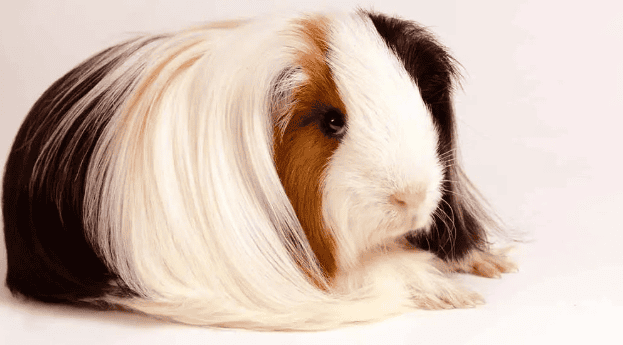Guinea pigs are rodents native to South America. They are closely related to chinchillas and porcupines. In South America, guinea pigs are often hunted or raised for meat. In the United States, guinea pigs are kept as pets and used in scientific research. Guinea pigs can be divided into three categories based on hair length: short hair, long hair and hairless
Characteristics of Guinea Pigs as Pets
Guinea pigs are smart, quiet animals that make great pets. They are not aggressive and would rather run away from danger than bite. They are sensitive animals and can be frightened by sudden and loud noises. Because guinea pigs are social animals, they are best kept in pairs or three. If kept alone, it may get close to its owner and bark in greeting
Guinea pigs can learn to get along with other household pets, such as cats, dogs, and rabbits, but should not be associated with those carrying Bordet's disease bacterium, which may cause serious illness in guinea pigs.
When raised in groups, a hierarchy is established, with the male usually taking the dominant position. Overcrowding may trigger aggressive behavior, and there may be aggression between uncastrated males in a group with females. Introducing a new guinea pig should be done in a neutral area and under the supervision of the owner at all times. When the animal density is too high or under stress, guinea pigs cannot adapt well to changes in food or environment, and may chew their hair. Guinea pigs are most active during the dawn and dusk periods and like to rest or sleep during the day

Physiological indicators
Life span 4–8 years (domesticated Average 5 years)
Adult body length 310mm
Adult weight
Male 900–1200g
Female 750–900g
p>Body temperature 37.2–39.5°C (rectal)
Respiration 42-104/min
Heart rate 230–380/min
Rearing environment Requirements
A guinea pig can be housed in a cage no smaller than 30 x 60cm, the bigger the better. The sides should be at least 30cm high
Because guinea pigs cannot jump or climb, they can be placed in an open-top cage
Guinea pigs like to exercise outside the fence, but need to be in Under owner supervision
Like all rodents, guinea pigs explore the world by nibbling on new things. Therefore, the play area should be checked for any potential hazards
The cage should be provided with some sunlight, with room temperature ranging from 13–21°C
Shades must be provided to prevent overheating, Heat stroke may occur at temperatures above 27–29°C
The interior of the cage should be well ventilated
The floor should preferably be solid and covered with plenty of dust-free bedding e.g. Shredded paper, composite recycled paper materials, hay or commercial granular litter
Guinea pigs will excrete more urine and feces. Their feces are relatively odorless and should be changed at least weekly Disposable bedding to control urine odor and prevent respiratory and skin diseases. Guinea pigs are sensitive to ammonia in urine
Environmental Enrichment
Enrichment items may include toilet paper rolls, untreated cardboard boxes, paper towel rolls, hay, straw, paper bags and specially designed Toys designed for large birds and cats
Nibbling items should be provided, such as apple branches, etc.
Guinea pigs like a quiet environment, so provide a box or tunnel for them to hide and rest
p>
Appearance of a healthy guinea pig
Skin with no rashes, ulcers, bruises or hair loss
Clear eyes with no discharge
Clean, clean hair Knotted
Nose clean and dry
Teeth bite normal
Skin on feet soft and pink, no ulcers
Active and curious
p>
Dietary recommendations
Grass is the main component of the diet, combined with fresh dark green leafy vegetables and a small amount of commercial granular grains and snacks
Snacks should be limited to No more than 1-2 small pieces in 24 hours
Unlike other animals, guinea pigs cannot synthesize vitamin C on their own, so vitamin C must be provided daily. Commercial pelleted food specially manufactured for guinea pigs usually contains vitamin C, but its content may be affected by storage conditions or time
It is recommended to supplement 50 mg of stable vitamin C tablets daily to ensure Adequate vitamin C intake
The digestive tract of guinea pigs is very sensitive, and sudden changes in diet (even changes in the brand of pellet food) may cause severe gastrointestinal discomfort and anorexia.
Food bowls should be cleaned daily as guinea pigs may defecate in them
Guinea pigs usually eat and pass cecal feces in the morning and evening
Give via a drinker/bowl Guinea pigs should be provided with fresh, filtered drinking water
Drinkers/bowls should be checked frequently to ensure they always have clean drinking water
Drinkers/bowls need to be cleaned daily
p>Vitamin C added to drinking water may be inactivated by contact with air, light and metal materials. Therefore, it is recommended to supplement vitamin C to guinea pigs by direct oral administration
Common diseases
Symptoms of vitamin C deficiency include bone and tooth abnormalities, abnormal subcutaneous bruising or bleeding
Overgrown teeth/dental malocclusion
Diarrhea/enteritis
Anorexia/weight loss
Pneumonia
Pododermatitis
Miscarriage/pregnancy toxemia/dystocia
Pregnancy-related hair loss
Skin disease/ulcerative dermatitis
Arthritis/ Septicemia
Bite (if group housed)

 扫一扫微信交流
扫一扫微信交流
发布评论